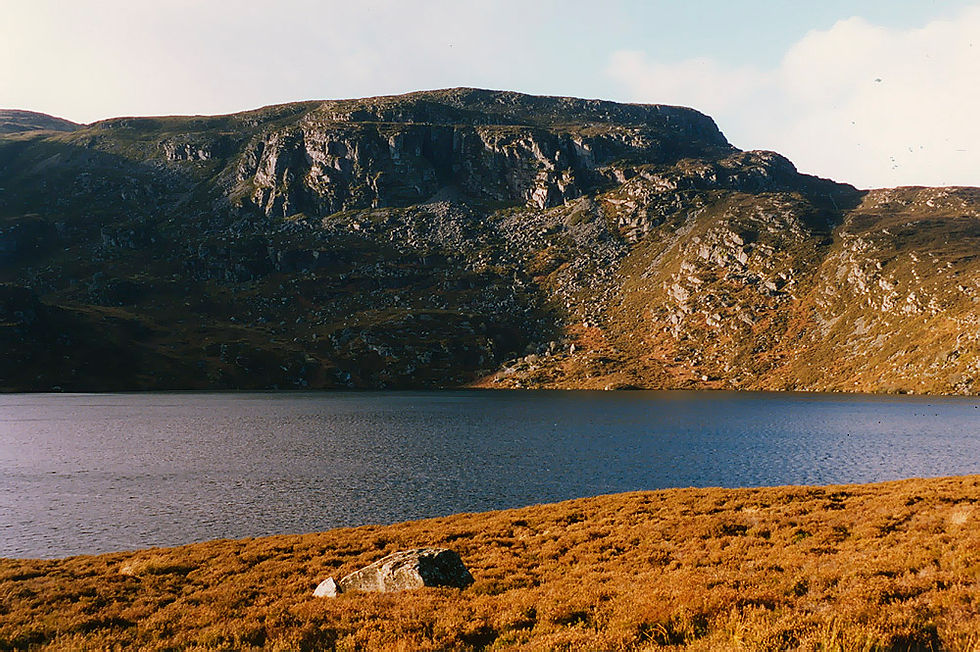Discover the Anisian Stage and Explore the Fossils and Geodiversity That Shaped Our Planet
- Wayne Munday
- Aug 18, 2025
- 6 min read
Updated: Dec 19, 2025
Sip back and discover the Anisian Stage dating back to between 247.2 – 242 million years and explore one of the earliest subdivisions of the Middle Triassic laying between the Olenekian and Ladinian stages. The Anisian Stage marks a key phase of global recovery after the Permian-Triassic (P-Tr) extinction event. Known as the Great Dying this was the most severe mass extinction in Earth's history during which nearly 90% of marine species and 70% of terrestrial vertebrates vanished. A stable greenhouse climate, rising sea levels and the absence of global anoxic events allowed complex marine and terrestrial ecosystems to re-establish. The first Triassic Period metazoan reefs formed, extensive carbonate platforms developed and ammonoids, conodonts, corals, bivalves, brachiopods and marine reptiles such as nothosaurs and ichthyosaurs emerged. The Anisian Stage is named after the Latin term Anisus for Austria’s Enns River and originates from the limestone formations along the river at Großreifling in the Austrian Alps. The Anisian Stage was defined in 1895 by Austrian geologists Wilhelm Heinrich Waagen and Carl Diener. The Anisian’s proposed GSSP lies at Desli Caira in the Dobrogea region of Romania defined by the Bithynian and Pelsonian substages and recognised for specific ammonoid biozones. During this time, Pangaea’s margins were bordered by the warm Tethys and Panthalassa oceans, experienced tectonic subsidence and widespread colonisation of terrestrial floras such as seed ferns, gymnosperms and lycopods stabilised floodplains inhabited by evolving early archosauriforms.
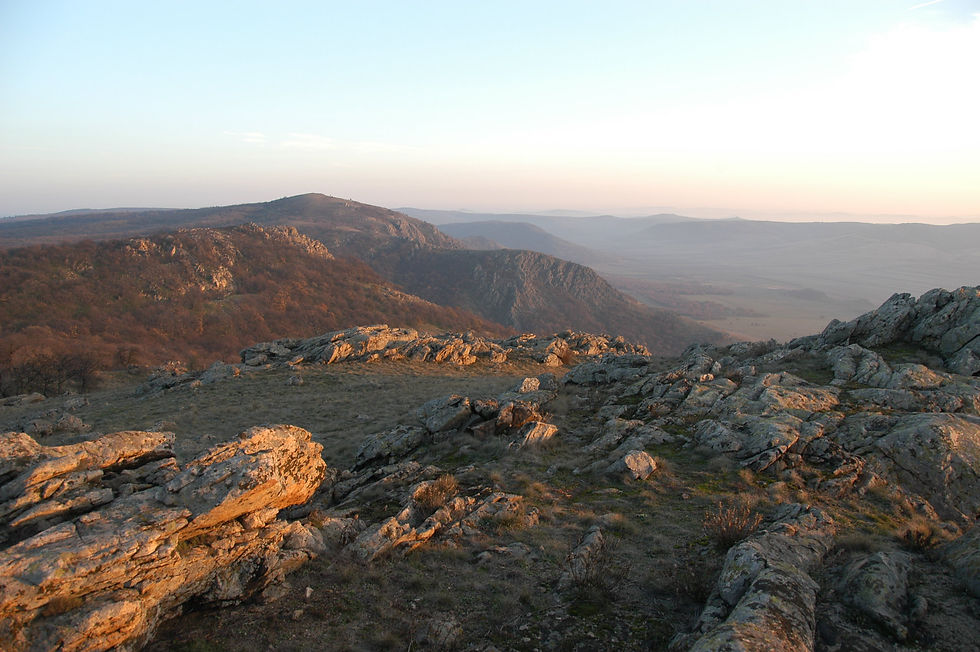
The chronostratigraphic scale for the Triassic Period was developed over two centuries ago when Friedrich August von Alberti in 1834 defined the “Trias”. By the mid-19th century, recognition of the Triassic Period was further enhanced by Edmund von Mojsisovics with his a detailed ammonoid based framework later refined with Wilhelm Waagen and Carl Diener in 1895. The Anisian Stage is the earliest subdivision of the Middle Triassic Epoch spanning a period of 5.2 million years. It directly succeeds the Olenekian Stage of the Lower Triassic and precedes the Ladinian Stage of the Middle Triassic within the Triassic Period of the Mesozoic Era.
The Anisian Stage marks a pivotal transition in Earth’s history characterised by the re-establishment of complex ecosystems and the diversification of both marine and terrestrial faunas. During this time, the earliest known reefs of the Triassic Period developed reflecting renewed ecological complexity and greater environmental stability. This stage tells a story of a shift from unstable climatic conditions of the Early Triassic to a more stable regime that supported and sustained biodiversity recovery and the widespread growth of large carbonate platforms.
Deşli Caira Hill, located in northern Dobrogea region Romania has been proposed as the Global Boundary Stratotype Section and Point (GSSP) for the base of the Anisian Stage - though other candidate locations do include sections in Guizhou Province in China and South Primorye in Russia.

Deşli Caira Hill is situated within the Agighiol Zone of Tulcea County this site preserves a crucial stratigraphic succession of the Bithynian (Lower Anisian) and Pelsonian (Upper Anisian) substages within the Agighiol Limestone. This succession comprises Hallstatt-type and Ammonitico Rosso limestones both of which are significant for understanding the Triassic Period. Hallstatt-type limestone is a facies of the broader Ammonitico Rosso a red, mud-supported rock characterised by its hematite-induced colouration and exceptional fossil assemblage of ammonoids, nautiloids, brachiopods, gastropods, crinoids, bivalves, conodonts, foraminifera and other macrofossils.
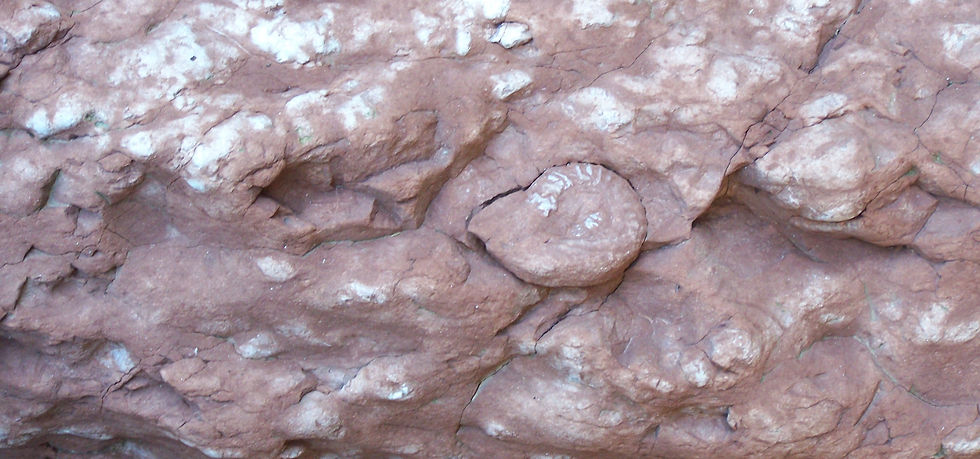
Interestingly, apart from features such as hardgrounds, early lithification, aragonite dissolution and condensed successions the Agighiol Limestone has fossil filled lenses or fissures known as Neptunian dykes. These sediment-filled fractures that cut through older rock layers typically forming in marine or coastal environments due to tectonic activity.
Unlike igneous dykes which are created by magma intrusion, Neptunian dykes are filled with younger sediments that may originate from marine or terrestrial sources and often contain fossils from both environments. These tabular or sheet-like structures provide valuable insights into past ecosystems. Notable examples include fossil-rich dykes in the Mendip Hills and the Holwell fissures in Somerset yielding Rhaetian Age marine and terrestrial fossils, including fish, reptiles and early mammals.
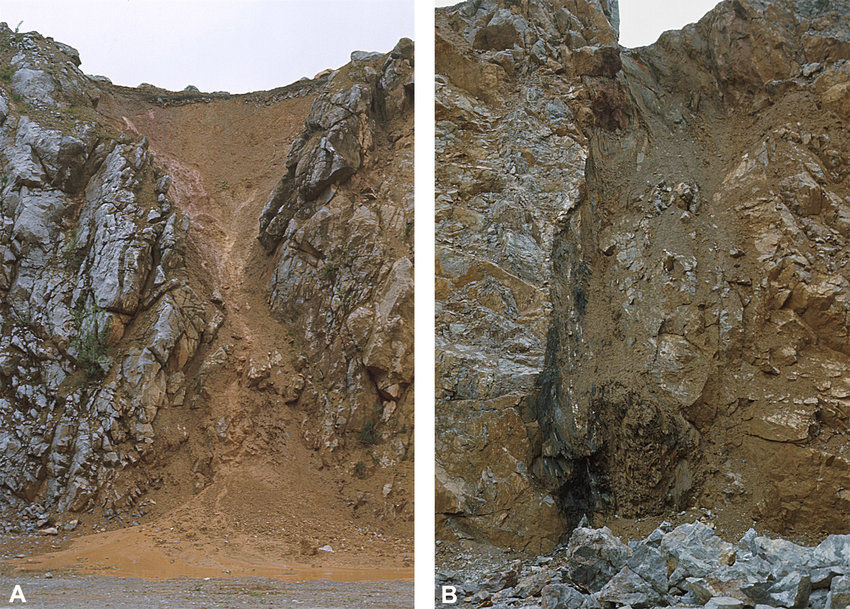
Dobrogea, or Dobrudja, is a historic region in southeastern Romania between the Danube River and the Black Sea covering 9,631 square miles with about 950,000 residents. Named after 14th-century ruler Prince Dobrotitsa its main cities include Constanța, Medgidia, Mangalia and Tulcea.
The Agighiol Zone is situated between the Danube River and the Black Sea and is an area of both ecological and historical importance. Its hilly landscape known as the Dealurile Agighiolului features steppic grasslands and oak woodlands protected as a Natura 2000 site, while also accommodating the Agighiol Wind Farm a major renewable energy project. The zone is equally significant for its cultural heritage known for the discovery of the 5th-century BC Geto-Dacian Helmet of Agighiol, a silver artifact now preserved in the National Museum of Romanian History. Tulcea County includes the city of Tulcea and surrounding settlements. Defined by the Danube Delta an internationally recognised UNESCO World Heritage Site and Biosphere Reserve the county combines lowland wetlands with the uplands of the Măcin Mountains.

During the Anisian Stage the supercontinent Pangaea remained largely intact. The Tethys Ocean bordered its eastern margin while the Panthalassa Ocean dominated the western hemisphere. Tectonic subsidence along passive continental margins and within intra-cratonic basins promoted marine transgressions creating broad shallow marine environments ideally suited for carbonate platform development. Extensive Middle Triassic marine successions from the Alps, South China and Southeast Asia allowed warm shallow epicontinental seas to form supporting high a biodiversity and sustained widespread carbonate sedimentation.
The Anisian climate was warm and consistent with a greenhouse regime with no evidence of polar ice caps though increasing seasonality and the establishment of monsoonal circulation along Tethyan coasts did occur. Rising relative sea levels expanded shallow marine habitats promoting reef growth and carbonate platform development.

The Anisian records a major rebound in biodiversity across marine and terrestrial environments. In the oceans, bivalves, gastropods, and brachiopods diversified while scleractinian corals and sponges re-established reef-building communities. Ammonoids such as Paraceratites and Balatonites along with conodonts including Chiosella timorensis and Neospathodus kockeli thrived.
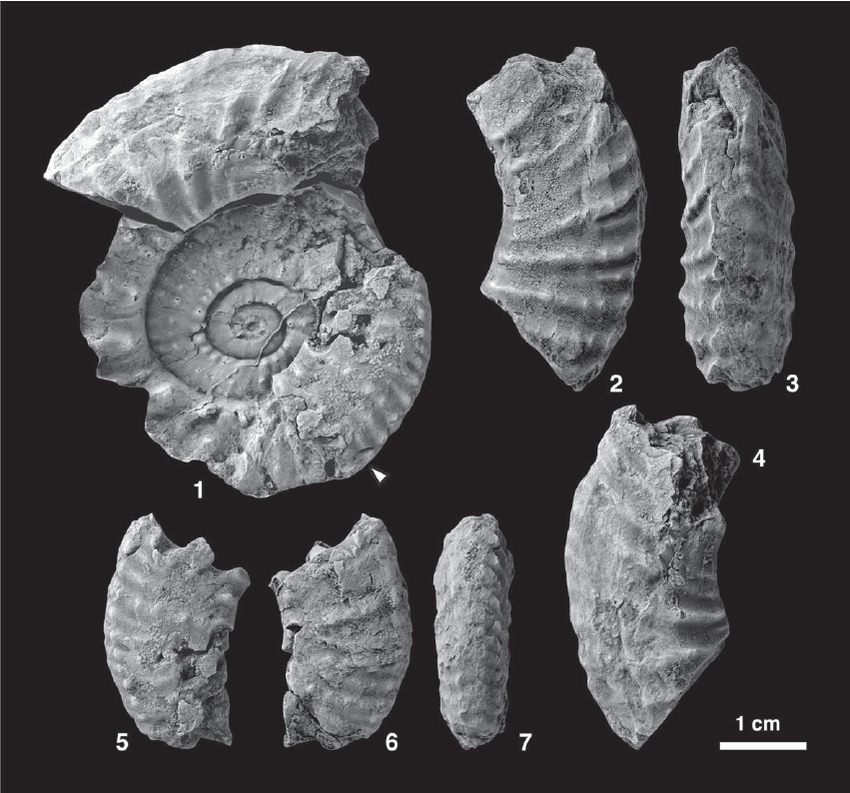
Marine reptile clades including nothosaurs, ichthyosaurs and early sauropterygians emerged as apex predators. On land, early archosauriforms ancestral to crocodiles, pterosaurs and dinosaurs became increasingly prominent alongside temnospondyl amphibians and therapsids such as dicynodonts and cynodonts.
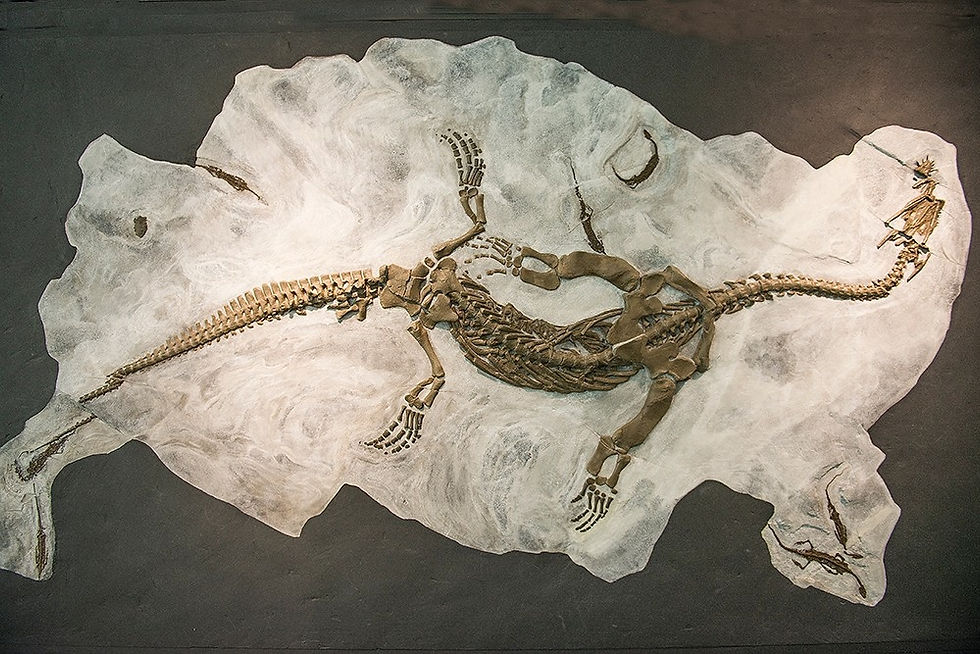
Lowland ecosystems recovered with seed ferns, gymnosperms (notably Voltzia), lycopods and horsetails contributing to the stabilisation of floodplains and wetlands. The Monte San Giorgio Lagerstätte in Switzerland and Italy provides an exceptional fossil record of Anisian marine life preserving vertebrates and invertebrates in extraordinary detail, including soft-tissue impressions.
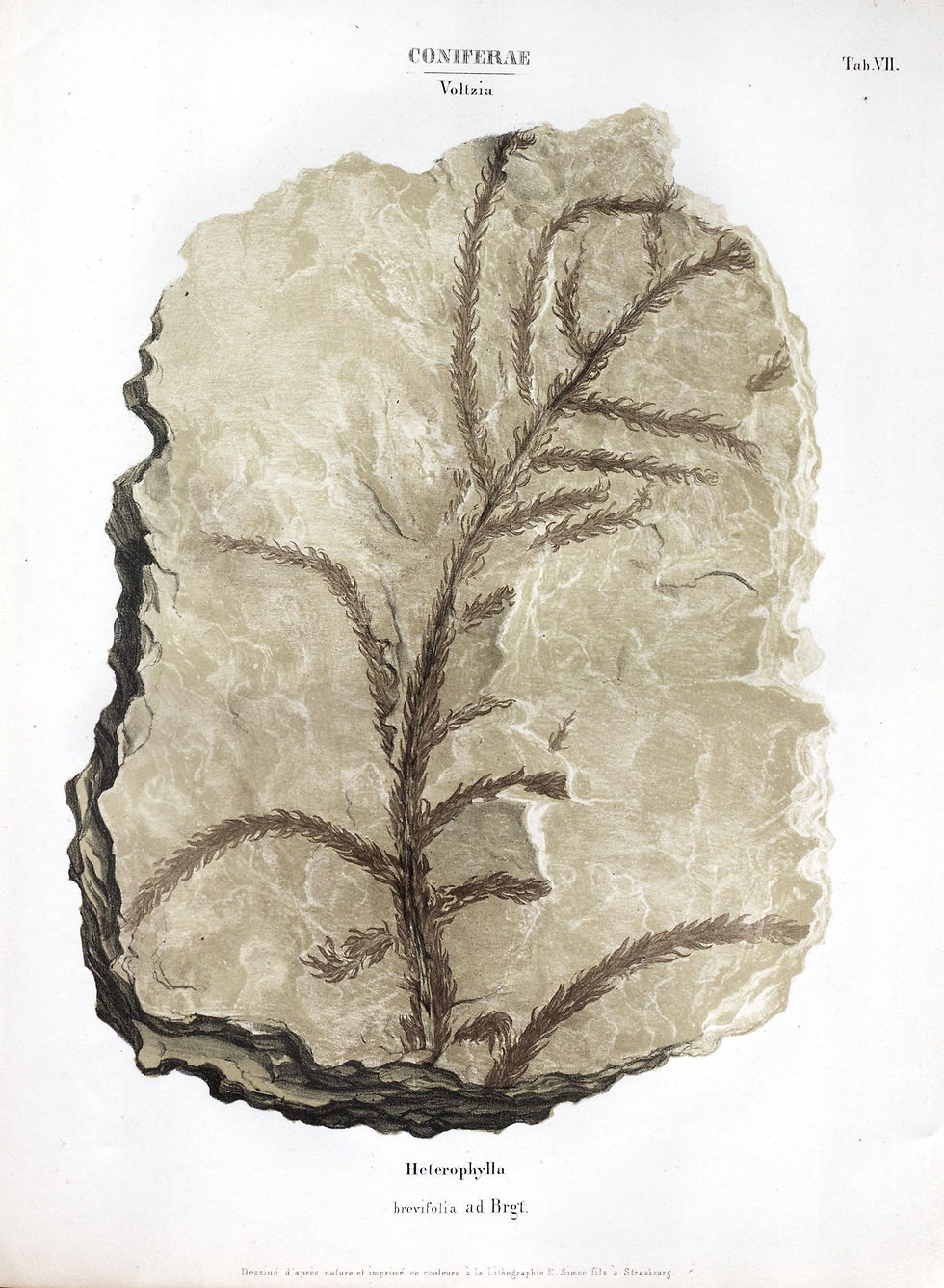
The sedimentary record of the Anisian Stage is dominated by limestones, dolostones and evaporites reflecting the prevalence of shallow marine carbonate platforms in low-latitude settings. Characteristic facies include oolitic limestones, tidal flat deposits, stromatolitic buildups and microbialites associated with early reef systems. Restricted basins occasionally produced evaporitic sequences of gypsum and anhydrite. Terrestrial deposits comprise of red river beds, mudstones and volcaniclastic sediments while coal seams are rare though present and consistent with the arid conditions that prevailed across much of Pangaea’s interior.
The Anisian Stage represents a pivotal interval in Earth’s history, spanning approximately 5.2 million years during the early Middle Triassic and marking a critical phase of post–Permian–Triassic extinction recovery. During this time, marine and terrestrial ecosystems experienced remarkable diversification and stabilization under a warm greenhouse climate, with rising sea levels enabling the development of extensive shallow marine habitats and the first metazoan reefs of the Triassic. Carbonate platforms flourished, and reef-building communities of corals, sponges, and ammonoids re-established complex ecological networks. On land, early archosauriforms, seed ferns, gymnosperms, and lycopods expanded across stabilizing floodplains and wetlands, while marine reptiles such as nothosaurs and ichthyosaurs emerged as apex predators. Key fossil sites, including the proposed GSSP at Deşli Caira Hill in Romania, preserve stratigraphic successions of Hallstatt-type and Ammonitico Rosso limestones rich in ammonoids, nautiloids, bivalves, and other macrofossils, while sediment-filled Neptunian dykes offer insights into both marine and terrestrial biodiversity. Collectively, these records demonstrate the re-establishment of ecological complexity and the interplay between tectonics, sea-level changes, and climate, highlighting the Anisian as a transformative stage in the recovery and evolution of life after Earth’s most severe mass extinction.









